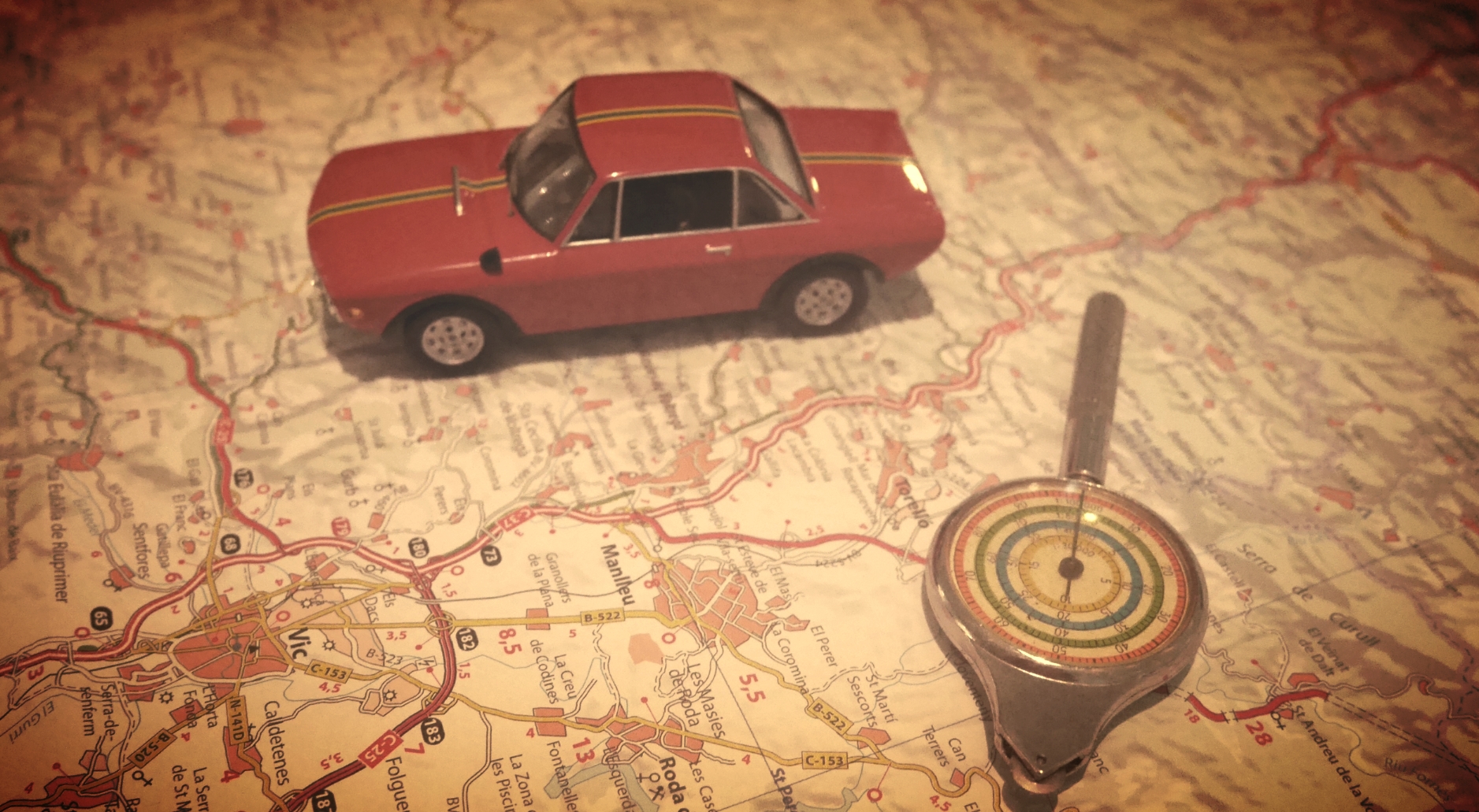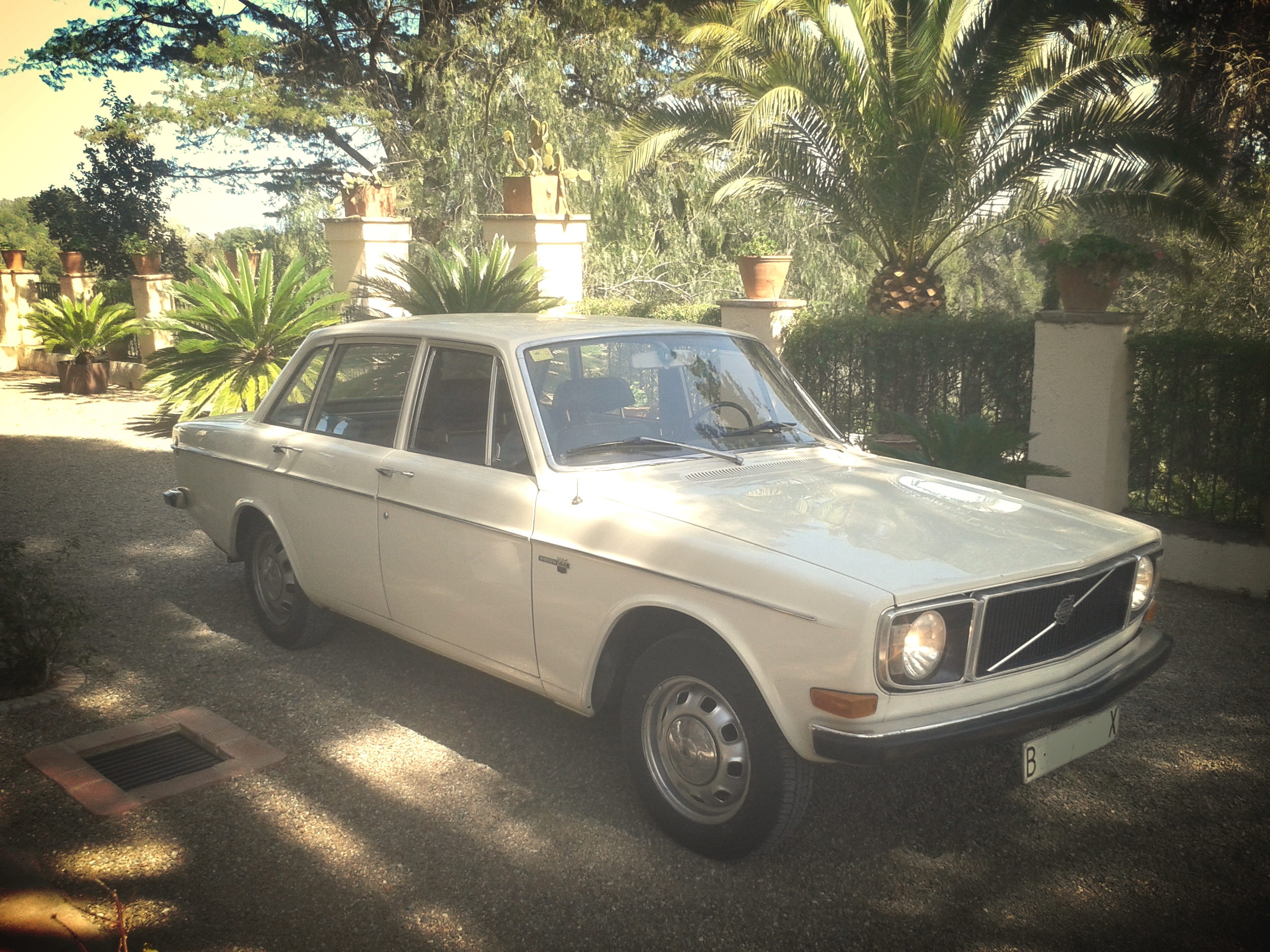our cars
Our cars are of course completely analog, they weren't even designed by a computer program, but by drawing them on a piece of paper with a pencil. They can be fixed without having to log them onto a computer, with mostly hand tools and a good ear. They are still completely made out of metal, quite thick metal actually, and if you are getting hot, you can open a window, you will have to wind it down by hand though... No power windows, no power steering, no turbo, just you, the car, and the road. We equipped the cars with a GPS tracker, so that in case something happens or you get lost, it's easy for us to pinpoint your exact location and get you going again as soon as possible.
Volvo 144
The Volvo 144 was a revolutionary car in its day. As the successor of the Amazon it had quite the reputation to live up to, and it did: it was the first Volvo to have the brick shape most people associate with the brand nowadays. Volvo continued the design in the 240 series until 1993, some body panels and the windows were never changed. It was the first car to have three point seatbelts, but they still were hung by a hook, they didn't reel in automatically yet. It still is a very special car to drive, with it's linear speedo, big and thin steering wheel, very comfortable seats, spacious interior, long nose and of course rear wheel drive. This might just be the ideal holiday car!
Lancia Fulvia Coupé 1.3S
The Lancia Fulvia was available only as a very well built sedan until 1965, when the company decided to go into rallying, and ordered their internal design department to build a car especially for that. The result was a stunning-looking coupé that also sold relatively well in the street version. Because of all the technical innovations and complicated constructions in this car - very typical of Lancia until the sixties - these cars became extremely expensive to buy, and eventually they became the downfall of Lancia as an independent brand. In 1969 they were bought by Fiat, making this the last of the original Lancias.
fiat/seat 127
Our latest addition to the fleet is this Seat 127. These were built in license in Barcelona by Seat, and are exact copies of their Italian sisters, and the successors to the 850 series, using the same engine as the 850 Sport Coupe and Spider. This little 903cc engine proved to be so good that it went to live on all the way to the modern Fiat Cinquecento in the nineties! This car was the Italian answer to the supermini trend (Mini started this off), and it shows: small outside, but very roomy inside, but only 700 kgs and a 903cc engine. It's a very fun car to drive, especially on the winding roads we take in our roadbook. In Spain, everybody had one or knows someone who did, which makes for smiles and thumbs up everywhere you go.
Good vibrations!
photo credit: FIAT
EXPECTED: FIAT/SEAT 850 COUPÉ
In 2018 we plan on expanding our fleet with a Seat 850 Coupé or Sport Coupé. These were built in license in Spain by Seat, and are exact copies of their Italian cousins. The Fiat was available in 3 series, Seat only made two, and continued production for a few years more. These are very nice cars to drive, small and nimble, but with a roomy interior. The engine and gearbox are in the back, and they are also rear wheel drive, which makes them a lot of fun to drive around these winding mountain roads.
On the same platform a small sedan was made, the 850N, the successor to the Fiat 600, as well as a convertible spider version, and -in Spain only- the sedan was made as a four door.





